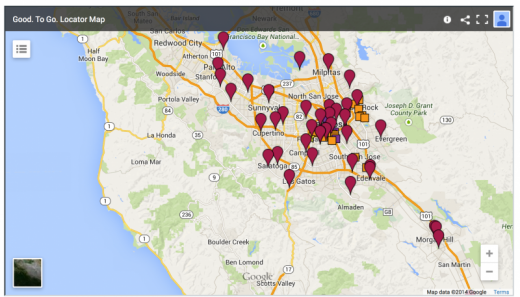Fresh food is coming to dozens of corner stores in San Jose as part of a new “Good. To Go.” initiative that launched this September. Organized by the Health Trust and the Hispanic Chamber of Commerce of Silicon Valley, the program aims to increase San Jose residents’ access to healthier food by improving the options available at smaller retailers.
Modeled off of a corner store initiative in Philadelphia, the Good. To Go. program provides participating corner store owners with marketing material, technical assistance, new equipment to help them sell fresh food, and cash incentives. The Health Trust’s approach is similar to the corner store efforts in San Francisco we highlighted recently in The Urbanist, but it also differs in some key ways. The San Jose project has a heavier focus on reaching many stores quickly — with a plan to work with 40 stores in two years, using a unified brand identifiable to customers — while San Francisco’s initiative has so far focused on more intensive redesigns with fewer stores.
The corner store campaign is only one part of the Heath Trust’s broader strategy to improve food retail options in San Jose. Other previously launched initiatives include Fresh Carts — a mobile produce vending project — and efforts to increase the number of farmers’ markets in San Jose. The Health Trust has developed an interactive map highlighting the locations of all of these projects.
 The map is also available for download as an iPhone or Android app.
The map is also available for download as an iPhone or Android app.
Encouraging corner stores to stock healthy options is important because finding quality food in one's neighborhood can be a major barrier to healthy food access for many Bay Area residents. One out of every 10 Bay Area adults report that they can either never or only sometimes find fresh fruit and vegetables in their neighborhood, according to SPUR’s analysis of data collected by UCLA. The barrier is even greater in low-income neighborhoods — which is where the Good. To Go. campaign is focusing — both because fewer retailers offer healthy food and also because many residents find it hard to afford the healthier options that are available.
As with the efforts in San Francisco, it will be important to evaluate the program’s impact on customer diet and its long-term financial viability for the retailers. In the short-term, though, the launch of the Good. To Go. campaign is an important step in a broader strategy that the Health Trust — and local Bay Area governments — are pursuing to make it easier for residents to access healthy food.
